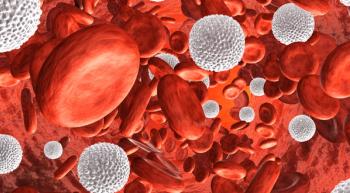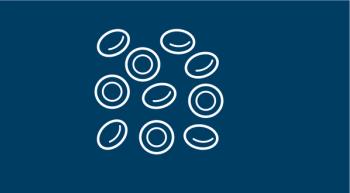
Parental Caring Behavior Matters During Cancer Treatment
Both par­ents and clinicians need more valid information to guide them on how to interact with a child during painful procedures related to cancer treatment.
Children with cancer must undergo repeated painful procedures such as lumbar punctures, bone marrow aspirations, and port access. These techniques are used for regular monitoring of disease, treatment effective­ness, and treatment-related toxicities or adverse effects (AEs).
However, children often report more pain and distress due to these procedures than from the cancer itself. Among can­cer survivors, prior experiences with distressing procedures can lead to avoiding both regular primary care and monitor­ing for AEs of cancer therapies.
Parents, who also may develop posttraumatic stress symp­toms from seeing their child go through these experiences, and clinicians play critical roles that affect a child’s response to painful procedures related to cancer treatment.1 Both par­ents and clinicians need more valid information to guide them on how to interact with a child during these situations.
MIXED ASSOCIATIONS
Current literature regard­ing how parental interac­tion behaviors affect child’s pain and distress during painful procedures is incon­sistent. Some studies imply that parental empathy (eg, “I know this is hard” and “I know it hurts”) and re-assurance behaviors (eg, “You’re OK” and “It’s almost over”) may not help chil­dren cope and that they instead lead to more pain and distress.1 Other studies suggest that the subdomains of empathic and reassuring behaviors can reduce children’s pain and distress.2
I worked with Louis Penner, PhD, and Felicity Harper, PhD, from Wayne State University and the Karmanos Cancer Institute in Detroit, Michigan, to understand how parental communication modality and behaviors influence children’s treatment-related responses such as pain and distress.
Penner and colleagues investigated 2 subdomains of empa­thy (eg, empathy concern and empathy distress) and showed that parental empathy concern (eg, being softhearted or warm) can reduce a child’s pain and distress during proce­dures, whereas parental empathy distress (eg, being upset or worried) can increase pain and distress. This type of work has provided valuable evidence that both parental verbal com­munication behaviors and emotional status can help children cope with painful procedures for cancer treatment.
Until now, parents’ nonverbal behaviors in this area have been rarely studied. We conducted a systematic review to look at the observational coding systems of parent-child interactions (eg, parental communication behaviors and/or the child’s behavioral responses) during painful procedures.3 We identified 17 coding systems, including 14 suitable for use in children aged 3 years and older, 2 with theoretical basis, and 11 with verbal and nonverbal parental behaviors that promoted either child coping or child distress.3
Our findings indicate a need to develop theory-based parent—child interaction coding systems that consider both verbal and nonverbal parental behaviors during painful procedures.
REDUCING CHILD PAIN AND DISTRESS
Based on Swanson’s Theory of Caring, Bai, together with researchers from the University of North Carolina at Chapel Hill and Wayne State University, developed and tested an 18-item Parental Caring Response Scoring System (P-CaReSS) in children during cancer port access.4
P-CaReSS is a promising tool for evaluating parental verbal, nonverbal, and emotional behaviors during cancer-related painful procedures. To further understand how parental car­ing verbal and nonverbal behaviors impact children’s expe­riences, 43 child-parent dyads, each with 2 or 3 video record­ings of the child undergoing port placement, were recorded and coded using the P-CaReSS.
Next, we examined whether the presence of a particular pa­rental caring behavior increased or decreased the probability of the occurrence of a child distress behavior within a 5-second tem­poral window.
We found that children were significantly less likely to dis­play behavioral (eg, kicking and escaping) and verbal dis­tress (eg, asking for help and screaming) following parental caring behaviors, especially the rarely studied nonverbal behaviors (eg, eye contact, dis­tance close enough to touch, and supporting/allowing). In addition, if a child was already upset during the procedure, parental caring behaviors (eg, eye contact and supporting/ allowing) reduced child distress. These findings provide detailed information on how parents’ verbal, nonverbal, and emotional actions can help their child cope with repeated cancer procedures.
Parent—child interaction is a complex phenomenon that can be explored via a variety of dimensions such as verbal, non­verbal, and emotional domains. Our studies have provided target information to revisit previous mixed findings regard­ing the influence of parental verbal and nonverbal behaviors on child treatment responses (eg, pain, distress, and coopera­tion) during painful procedures to treat cancer.
Results suggest that caring parents are not only doing what they can to help their child or control behaviors but also encouraging their child to express feelings and describe needs to them. This series of work can expand parenting roles clinically in cancer treatment—related procedures and provide a basis for developing nursing educational inter­ventions that aim to advocate “caring” parents during port access procedures, decreasing the negative effects of inva­sive procedures on the psychological health of both child and parents.
Jinbing Bai, PhD, RN is postdoctoral fellow, Nell Hodgson Woodruff School of Nursing at Emory University in Atlanta, Georgia.
References
- Blount RL, Cohen LL, Frank NC, et al. The Child-Adult Medical Procedure Interaction Scale-Revised: an assessment of validity. J Pediatr Psychol. 1997;22(1):73-88.
- Cline RJ, Harper FW, Penner LA, et al. Parent communication and child pain and distress during painful pediatric cancer treatments. Soc Sci Med. 2006;63(4):883-898. doi: 10.1016/j.socscimed.2006.03.007.
- Bai J, Swanson KM, Santacroce SJ. Observational coding systems of parent—child interactions during painful procedures: a systematic review [published online May 3, 2017]. Pain Pract. doi: 10.1111/papr.12588.
- Bai J. Parent Distress, Parent-Child Interactions, Child Distress and Child Cooperation During Cancer Treatment—Related Port Starts: A Caring Perspective [dissertation]. The University of North Carolina at Chapel Hill; 2016.
Newsletter
Knowledge is power. Don’t miss the most recent breakthroughs in cancer care.
















































































